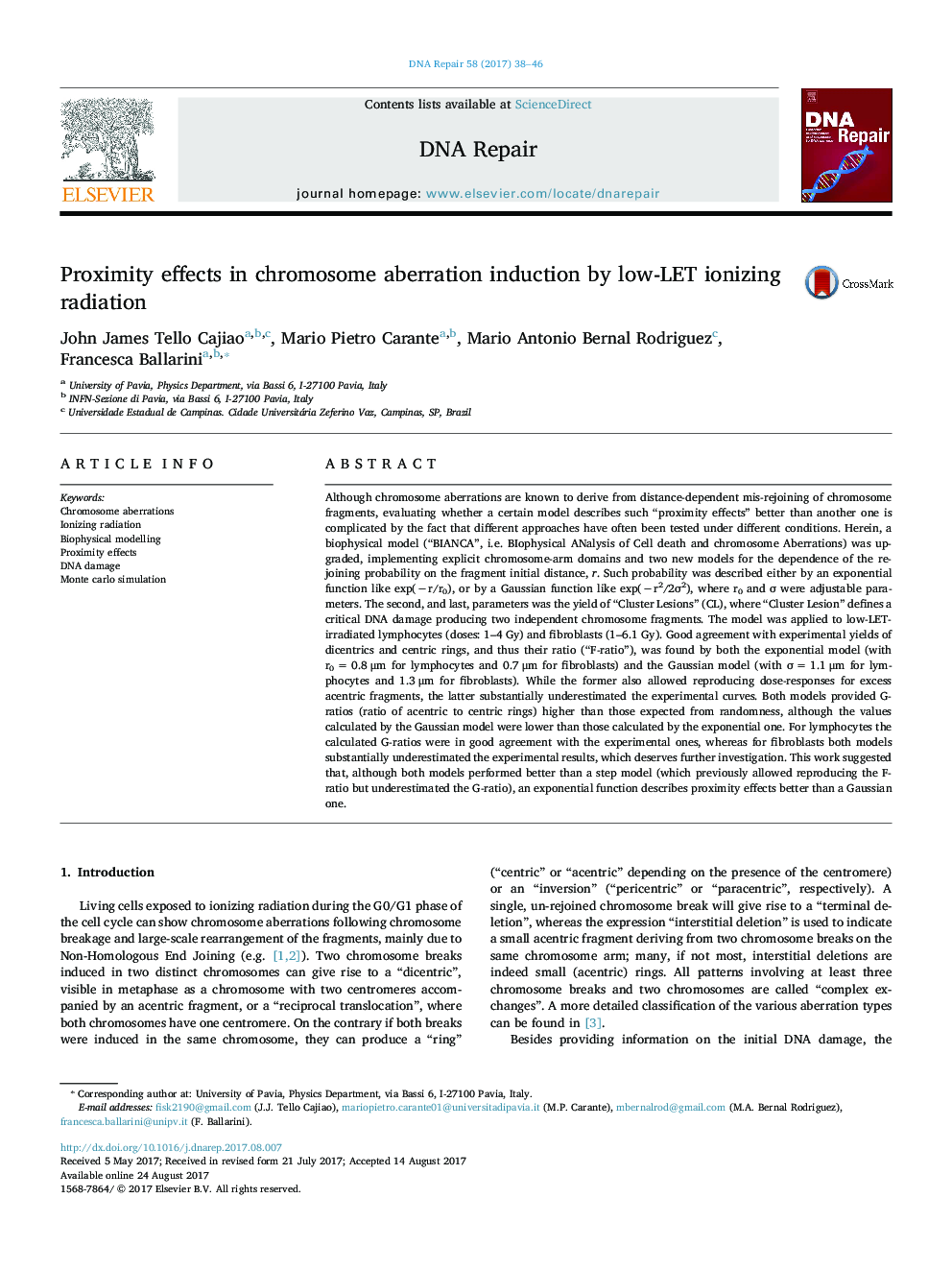| Article ID | Journal | Published Year | Pages | File Type |
|---|---|---|---|---|
| 5510961 | DNA Repair | 2017 | 9 Pages |
â¢Chromosome-arm domains were implemented in the 2-parameter BIANCA biophysical model.â¢A negative exponential proximity function and a Gaussian one were implemented.â¢Lymphocytes and fibroblasts exposed to intermediate doses of γ-rays were considered.â¢Both functions performed better than a previously-tested step function.â¢The exponential function reproduced the data better than the Gaussian one.
Although chromosome aberrations are known to derive from distance-dependent mis-rejoining of chromosome fragments, evaluating whether a certain model describes such “proximity effects” better than another one is complicated by the fact that different approaches have often been tested under different conditions. Herein, a biophysical model (“BIANCA”, i.e. BIophysical ANalysis of Cell death and chromosome Aberrations) was upgraded, implementing explicit chromosome-arm domains and two new models for the dependence of the rejoining probability on the fragment initial distance, r. Such probability was described either by an exponential function like exp(âr/r0), or by a Gaussian function like exp(âr2/2Ï2), where r0 and Ï were adjustable parameters. The second, and last, parameters was the yield of “Cluster Lesions” (CL), where “Cluster Lesion” defines a critical DNA damage producing two independent chromosome fragments. The model was applied to low-LET-irradiated lymphocytes (doses: 1-4 Gy) and fibroblasts (1-6.1 Gy). Good agreement with experimental yields of dicentrics and centric rings, and thus their ratio (“F-ratio”), was found by both the exponential model (with r0 = 0.8 μm for lymphocytes and 0.7 μm for fibroblasts) and the Gaussian model (with Ï = 1.1 μm for lymphocytes and 1.3 μm for fibroblasts). While the former also allowed reproducing dose-responses for excess acentric fragments, the latter substantially underestimated the experimental curves. Both models provided G-ratios (ratio of acentric to centric rings) higher than those expected from randomness, although the values calculated by the Gaussian model were lower than those calculated by the exponential one. For lymphocytes the calculated G-ratios were in good agreement with the experimental ones, whereas for fibroblasts both models substantially underestimated the experimental results, which deserves further investigation. This work suggested that, although both models performed better than a step model (which previously allowed reproducing the F-ratio but underestimated the G-ratio), an exponential function describes proximity effects better than a Gaussian one.
